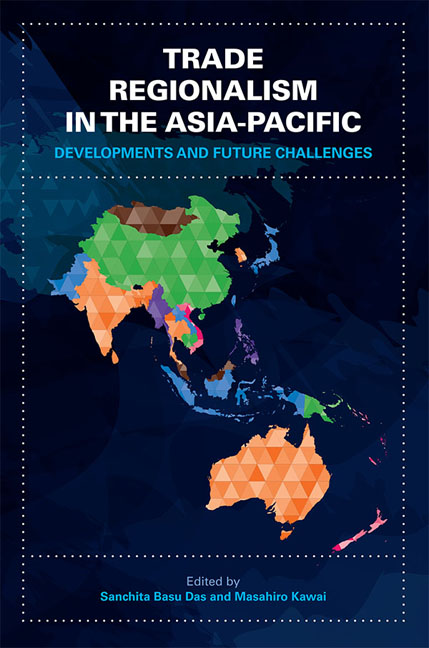Book contents
- Frontmatter
- Contents
- Foreword
- Acknowledgments
- List of Abbreviations
- The Contributors
- 1 Introductory Overview — Trade Regionalism in the Asia-Pacific: Developments and Future Challenges
- I The Trans-Pacific Partnership (TPP) Agreement
- 2 The Origins and Evolution of TPP Trade Negotiations
- 3 The Political Economy of Joining TPP: The Case of Malaysia
- 4 China and the TPP: Reflections and Responses
- 5 Japan and Entanglement of Regional Integration in the Asia-Pacific: Combining Cutting-Edge and Traditional Agendas
- II The Regional Comprehensive Economic Partnership (RCEP) Agreement
- III Regional Economic Integration: A Multi-stage Approach
- IV Old and Emerging Approaches to Asia-Pacific Regional Integration
- V Asia-Pacific Regional Integration: Towards Convergence?
- Index
4 - China and the TPP: Reflections and Responses
from I - The Trans-Pacific Partnership (TPP) Agreement
Published online by Cambridge University Press: 05 July 2016
- Frontmatter
- Contents
- Foreword
- Acknowledgments
- List of Abbreviations
- The Contributors
- 1 Introductory Overview — Trade Regionalism in the Asia-Pacific: Developments and Future Challenges
- I The Trans-Pacific Partnership (TPP) Agreement
- 2 The Origins and Evolution of TPP Trade Negotiations
- 3 The Political Economy of Joining TPP: The Case of Malaysia
- 4 China and the TPP: Reflections and Responses
- 5 Japan and Entanglement of Regional Integration in the Asia-Pacific: Combining Cutting-Edge and Traditional Agendas
- II The Regional Comprehensive Economic Partnership (RCEP) Agreement
- III Regional Economic Integration: A Multi-stage Approach
- IV Old and Emerging Approaches to Asia-Pacific Regional Integration
- V Asia-Pacific Regional Integration: Towards Convergence?
- Index
Summary
INTRODUCTION
During the post-Cold War era, China engaged the Asia-Pacific economies through regional cooperation arrangements. These arrangements include the Asia-Pacific Economic Cooperation (APEC) forum, ASEAN (Association of Southeast Asian Nations) Plus Three (APT) forum, and other bilateral or plurilateral Free Trade Agreements (FTAs). APEC — one of East Asia';s few regional arrangements when the Cold War ended — was the first one China joined. After the 1997 Asian Financial Crisis, the regional architecture of East Asia was reshaped, with the APT emerging as East Asia's main economic framework (this included ten ASEAN countries plus China, Japan, and South Korea). Later, the APT evolved into a parallel framework in East Asia with APEC as a trans-pacific platform. This dual-framework architecture in the Asia-Pacific worked well for China until Japan proposed the “10+6” (Australia, New Zealand, and India were included) in 2006.
Since the 1997 crisis, China became active in regional cooperation and subsequently launched bilateral FTAs with ASEAN nations. By insisting on using APT as the main channel of East Asian cooperation, China has shown its preference for the smaller framework for economic cooperation. To some observers, this was because China was trying to maintain its dominant position in East Asian cooperation. Since then, China and Japan had been locked in competition for leadership of regional cooperation (Wang 2010) until the Trans-Pacific Partnership (TPP) was launched in 2008. Some have argued that an FTA strategy was formed in China during this period (Zhu 2009).
During this period, China experienced persistently high GDP growth rate, partly because of its successful cooperation with its regional economies. As a result, economic interdependence was acknowledged. However, this economic rise unfortunately led to “strategic tension” (Zhu 2013) between China and the United States, especially when the former was seen as a potential challenger of the latter.
When the United States launched the TPP with other APEC members, China was wary of the new initiative that focused on making “next generation trading rules”. Known as a latecomer in regional cooperation, China currently faces many challenges to further liberalization. Research interests generated among research institutes over these issues include the TPP's impact on China and recommendations on how China should respond to the agreement.
- Type
- Chapter
- Information
- Trade Regionalism in the Asia-PacificDevelopments and Future Challenges, pp. 71 - 84Publisher: ISEAS–Yusof Ishak InstitutePrint publication year: 2016

